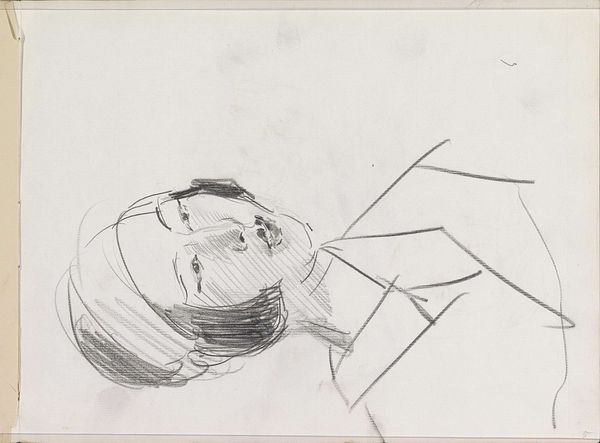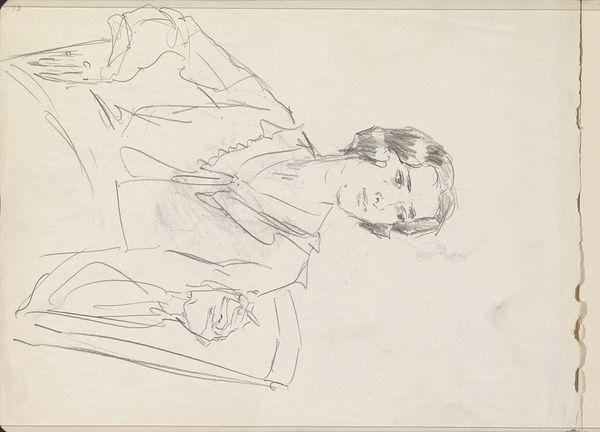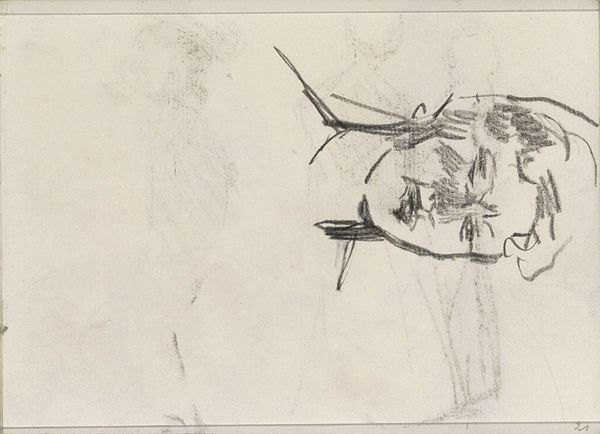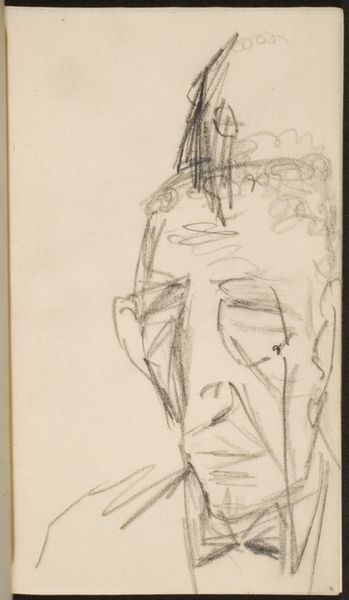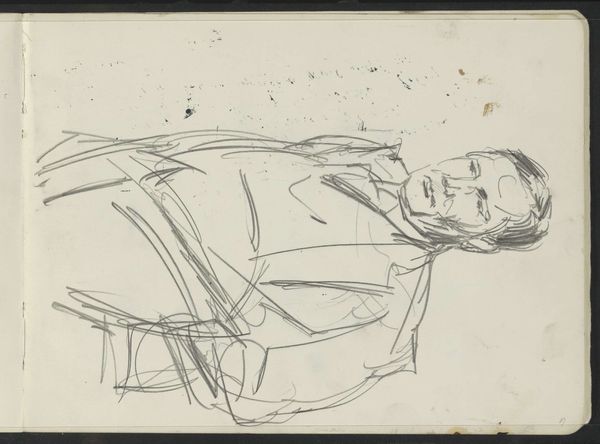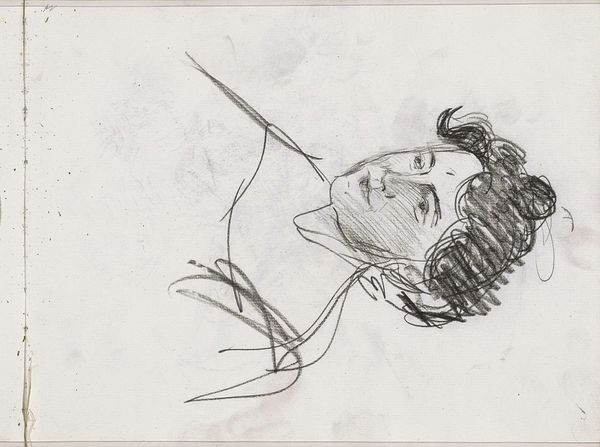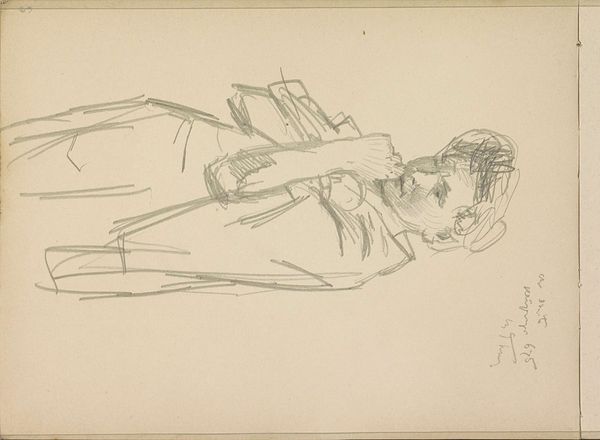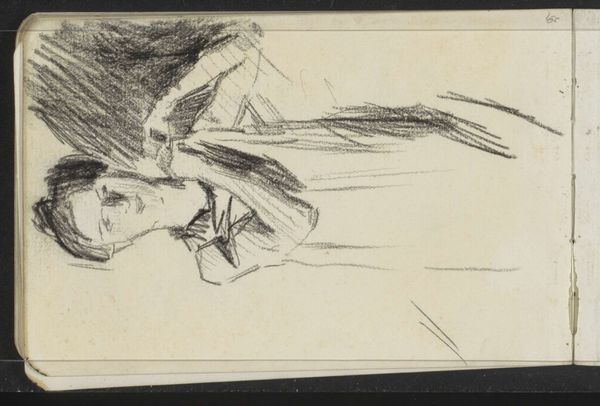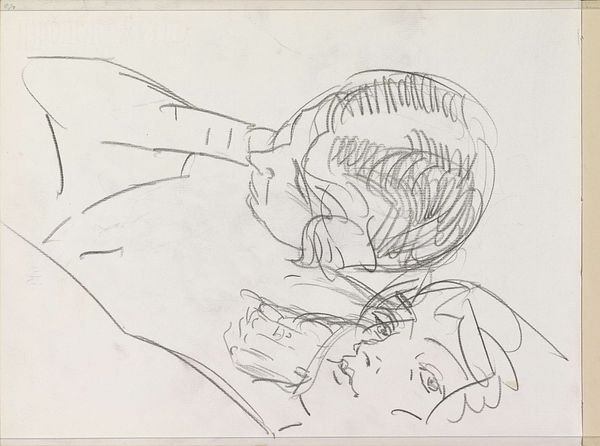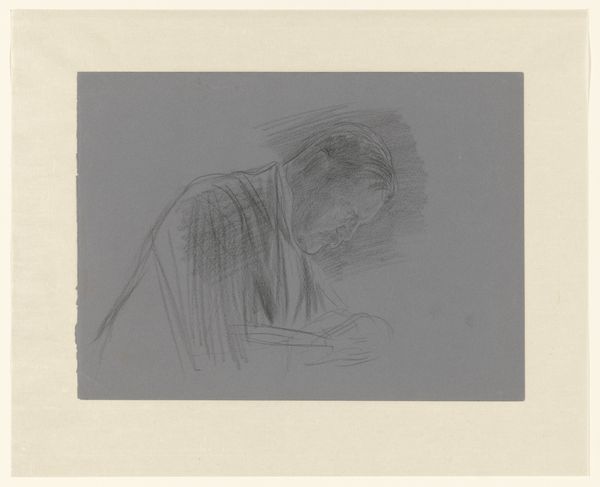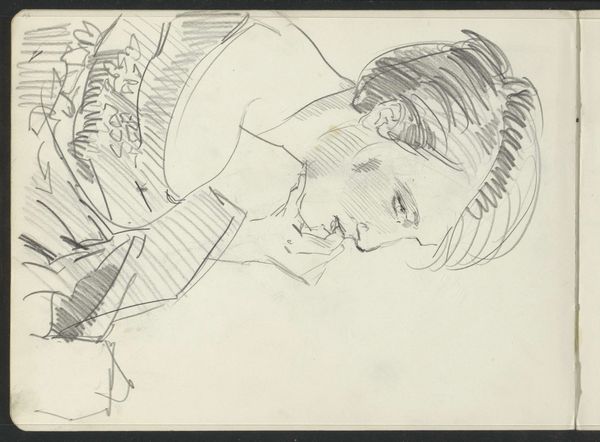![Selbstportrait mit Kerze (Self-Portrait with Candle) [p. 23] by Max Beckmann](/_next/image?url=https%3A%2F%2Fd2w8kbdekdi1gv.cloudfront.net%2FeyJidWNrZXQiOiAiYXJ0ZXJhLWltYWdlcy1idWNrZXQiLCAia2V5IjogImFydHdvcmtzL2YwYjA2Zjk3LTg1MzItNDI3Yy1hNWVjLWYyYjk3NDAyZjBlZC9mMGIwNmY5Ny04NTMyLTQyN2MtYTVlYy1mMmI5NzQwMmYwZWRfZnVsbC5qcGciLCAiZWRpdHMiOiB7InJlc2l6ZSI6IHsid2lkdGgiOiAxOTIwLCAiaGVpZ2h0IjogMTkyMCwgImZpdCI6ICJpbnNpZGUifX19&w=1920&q=75)
Selbstportrait mit Kerze (Self-Portrait with Candle) [p. 23] 1934
0:00
0:00
Copyright: National Gallery of Art: CC0 1.0
Curator: Welcome! Today, we’re looking at Max Beckmann’s “Self-Portrait with Candle,” a pencil drawing from 1934. Editor: My first impression is one of stark intimacy. The sketch, despite its seeming simplicity, feels very raw and vulnerable. You can sense a real human presence there. Curator: Indeed. Beckmann, a key figure in German Expressionism, uses the self-portrait as a vehicle to explore the inner self. The candle suggests illumination, perhaps searching for truth, but also alludes to mortality given how fragile candlelight can be. What do you think this "searching for truth" looks like during the rise of fascism? Editor: In the context of 1934, with the Nazi regime tightening its grip, the image takes on a heavy political charge. It feels like an act of quiet defiance, a steadfast look inward as the world outside threatens to erase individuality and intellectual thought. And let's consider, he was soon after labelled a "degenerate artist" by the Nazis. Curator: Precisely. Notice how he renders himself. The lines are almost frantic in places, and his features have been hardened in tone. I think those techniques create a tension with the subject, who appears to be looking inward. In Expressionism, the face becomes a terrain of symbolic forms: the window of the soul, perhaps? Editor: That tension resonates powerfully. The frantic lines, as you point out, suggest internal turmoil, or even anxiety. The striped shirt he's wearing, rendered through those harsh lines, even reads like a caged environment! We’re not simply looking at a man staring at himself; we’re witnessing a portrait of survival in an increasingly hostile environment. Curator: So, the symbolism, which can initially appear simple, deepens when seen against the period’s social backdrop. As Germany started on its path to cultural control, Beckmann, with this "simple" self portrait, became a poignant beacon. He refused to hide and instead shone his artistic light for as long as he was able to. Editor: It’s a reminder that art can be both personal and powerfully political. This self-portrait is like a visual poem reflecting the complex reality of existence during one of history’s darkest chapters. It asks us to confront, not to look away. Curator: It's amazing how a quick sketch done in pencil becomes such an enduring symbol of resilience. Thanks for sharing your perspective! Editor: And thank you. It’s always insightful to delve into the intersecting layers of art and activism.
Comments
No comments
Be the first to comment and join the conversation on the ultimate creative platform.
